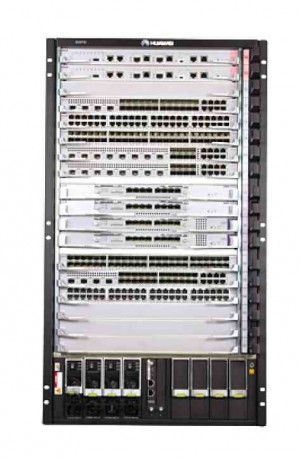The days of personal computers (PCs) and laptops may be numbered.
“The PC is already on its way out; laptops have started to disappear,” said Barry Lerner, South Pacific regional chief information officer of Huawei Australia. “We’re going into the small (mobile) devices, and the tablets. Businesses and customers will start to utilize cloud.”
Ron Raffensperger, chief technology officer for data center solutions, IT product line of Huawei, reflected this sentiment when he said that everything would soon be virtualized.
“At the end of the day everything is going to be on cloud,” Raffensperger said.
These observations, among other worldwide trends in information and communication technology, were discussed by Huawei executives and their guests during the four-day Huawei Philippines ICT Carnival held at Intercontinental Manila Hotel in Makati City last Oct. 28.
With the theme “Pave the Future a Better Way,” the event showcased the company’s products and telecommunications solutions to suit the needs of customers, be they personal users or large enterprises.
The event heralded the launch in the local market of two of Huawei’s latest offerings for enterprises—OceanStor 18000 series high-end storage system and Agile Switch S12700 series.
Huawei, a global ICT solutions provider, has established an infrastructure that provides customers worldwide with comprehensive services from telecommunications and enterprise networks to devices and cloud computing.
“Globally, Huawei is driving the paradigm shift from an era of traditional network to Agile network,” Huawei Philippines chief executive officer Gavin Dai said in a statement. “We are introducing these products to cater to the growing data storage needs of Philippine enterprises.”
OceanStor 18000 is Huawei’s flagship product. The first high-end storage system designed and manufactured in China, OceanStor 18000 is a platform for next generation data centers featuring virtualization, hybrid cloud, simplified IT and low carbon footprints.
With high speed and huge capacity cache, OceanStor 18000 series has a large internal bandwidth to ensure reliability and performance.
Agile Switch S12700, on the other hand, is designed for next generation campus networks. Using a fully programmable architecture, the S12700 series supports a smooth evolution to software-defined networking.
With unified user management capabilities, its packet conservation algorithm for Internet supports monitoring of service flows, helping manage services in a more refined way.
The Agile solutions for campus is focused on “giving consistent user experience,” said Darren Chew, deputy director for South Pacific enterprise business group of Huawei Malaysia.
“We have servers that you can build an entire cloud platform on,” said Raffensperger. “We have this infrastructure that supports all of the capabilities you’ll need in ICT.”
Huawei could be of help in this big “data explosion,” said Raffensperger. Your data may be “as big as an ocean … and you can’t lose any of it…. It is very valuable to your organization.”
It is important then, he said, to have a storage system that is secure, trusted, flexible and efficient.
Raffensperger said that with Huawei’s products being more “controlled by software than hardware,” supporting new kinds of data would not be a problem.
He added that the wear-leveling software Huawei created “allows you to have essentially no disk failures.”
This technology, which is now available in the market, is currently in use in some of the biggest banks in China, he said.
The banks in China “have huge amounts of activity that they have to deal with, but they are also very risk averse. [They] don’t want to lose customer information,” Raffensperger noted.
Here in the country, Huawei is focusing to work on industries such as transportation, finance, energy, public sector and education, among others, said Dai.
According to William Dong, vice president for South Pacific enterprise business marketing and solution sales of Huawei, the company “can provide the infrastructure, but we need our partners to meet their specific requirements.”
The most successful factor of Huawei, Dong said, “is its being customer-centric.”
Huawei has invested a lot in research and development (R&D), Dai sai. Ten percent of Huawei’s annual sales revenue goes into R&D to strengthen the company’s IT capabilities.
“We hope this investment can help us provide innovative solutions to our customers,” said Dong.
Lerner, on the other hand, said that the company has so many diverse customers in vertical industries.
“We have one of the biggest interoperability labs in Asia,” he added.
One of the speakers during the ICT carnival, Leonides Tolentino of Philippine Batteries Inc., shared his company’s experience working with Huawei.
The manager of the company behind the brand Motolite said that, apart from video conferencing solutions, Huawei also provided it with CCTVs that could withstand turbulent conditions at the company’s plants.
Tolentino emphasized the importance of employing cost-effective IT solutions, adding that Huawei is not just a supplier but a partner in business.
“It’s a partnership built on trust,” he pointed out.
Huawei is also the most important contributor to LTE technology, blazing the trail for the rest of the world, Dai said. The company has already started to invest in 5G technology.
“This whole digital revolution is changing the way we live,” said Lerner, as he noted that technology is turning the world into a happier, healthier and safer place to live in.
